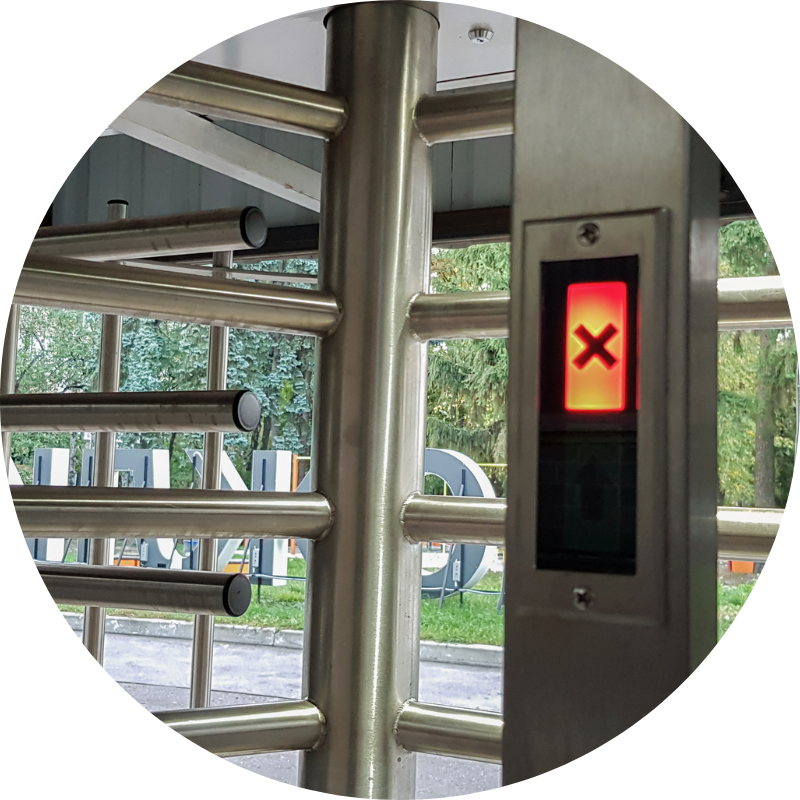
Behind the Security Curtain: Understanding Tailgating
In the world of physical security, “Tailgating” isn’t about barbecues or sporting events. Instead, it refers to a significant security breach where an unauthorized person gains access to a secure area by following an authorized person through a controlled entry point. Despite the simplicity of the tactic, tailgating poses a serious risk to the security of buildings, data, and personnel. In this blog, we’ll delve into what tailgating is, why it matters, and how you can protect your organization from this all-too-common security threat.
The Basics of Tailgating
Tailgating occurs when an unauthorized individual follows closely behind an authorized person to gain access to a restricted area without proper authentication. This often happens at doors controlled by access cards, biometric scanners, or keypads. The authorized person may unknowingly hold the door open for the tailgater, assuming they are also authorized.
Types of Tailgating
- Accidental Tailgating: This occurs when an unauthorized person inadvertently gains access because an employee holds the door open out of politeness, unaware that the individual is not authorized.
- Intentional Tailgating: In this scenario, the tailgater deliberately seeks to bypass security measures by exploiting the good nature of an employee or waiting for a distracted moment to slip through.
Tailgating is a Serious Security Threat
- Access to Sensitive Areas: Tailgating can lead to unauthorized access to areas containing sensitive information, valuable assets, or critical infrastructure. This can result in data breaches, theft, or sabotage.
- Insider Threats: Even if the tailgater is a familiar face within the organization, such as a contractor or former employee, they may have malicious intent. Insider threats are particularly dangerous because the individual may already be familiar with the organization’s security protocols and weaknesses.
- Regulatory Compliance: For industries governed by strict security regulations, such as healthcare, finance, or government, tailgating can lead to non-compliance issues, hefty fines, and reputational damage. Maintaining access control integrity is crucial to meeting regulatory standards.
Prevent Tailgating & Enhance Security Awareness
Education is the first line of defense against tailgating. Employees should be trained to recognize and prevent tailgating incidents. This includes:
- Security Training: Regular training sessions on the importance of access control and the risks of tailgating.
- Reminders: Use signage near entry points to remind employees not to hold the door open for anyone they don’t recognize or who isn’t displaying proper identification.
- Implement Physical Barriers: Physical security measures can greatly reduce the likelihood of tailgating. Some effective solutions include:
- Turnstiles or Speed Gates: These barriers allow only one person to pass through at a time, making it difficult for a tailgater to follow someone unnoticed.
- Mantraps: This is a small room or enclosure that only permits one person to enter at a time. The door behind the individual must close before the door ahead opens, effectively preventing tailgating.
- Security Guards: Stationing security personnel at key entry points adds an extra layer of scrutiny and can deter potential tailgaters.
Leverage Technology
Technology can play a crucial role in detecting and preventing tailgating:
- Access Control Systems: Use systems that require multifactor authentication, such as combining access cards with biometric verification, to make it harder for unauthorized individuals to gain entry.
- Video Surveillance: Monitor entry points with video surveillance to detect and record tailgating attempts. Some systems can even alert security personnel in real time if tailgating is detected.
- Tailgating Detection Systems: These specialized systems use sensors to detect when more than one person passes through a door or turnstile with a single authorization and can trigger alarms.
Create a Tailgating Response Protocol
Establish a clear protocol for employees to follow if they suspect someone is tailgating. This should include:
- Reporting Suspicious Activity: Encourage employees to report any suspicious behavior or tailgating attempts to security personnel immediately.
- Non-Confrontational Approach: Employees should be trained on how to politely and safely handle situations where someone attempts to tailgate, such as asking the individual to use their own access card or directing them to security.
The Role of Culture in Preventing Tailgating – Fostering a Security-Conscious Environment
Creating a culture of security within the organization is crucial. When employees understand the importance of access control and are vigilant in following protocols, the risk of tailgating decreases significantly. Encourage a mindset where everyone feels responsible for the security of the workplace.
Encouraging Accountability
Hold employees accountable for maintaining security protocols. This can be reinforced through regular audits, feedback sessions, and recognition of employees who demonstrate strong security practices.
Conclusion
Tailgating is a subtle yet serious security threat that can have far-reaching consequences for your organization. By understanding the risks and implementing robust prevention strategies, you can protect your assets, ensure regulatory compliance, and maintain a secure work environment. Remember, effective security starts with awareness and a collective commitment to vigilance.
For more information about our services, please contact us at 888.632.2940.
*Payentry, an MPAY Company (Company), is not a law firm. This article is intended for informational purposes only and should not be relied upon in reaching a conclusion in a particular area of law. Applicability of the legal principles discussed may differ substantially in individual situations. Receipt of this or any other Company materials does not create an attorney-client relationship. The Company is not responsible for any inadvertent errors that may occur in the publishing process.

